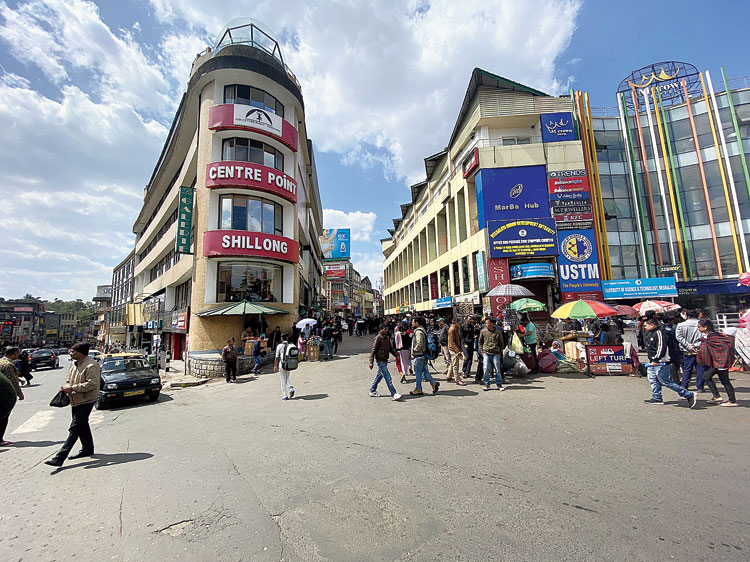
Tathagata Roy at his office in Raj Bhavan on Sunday. Picture by Andrew W. Lyngdoh
The act has exempted the scheduled/tribal areas of Meghalaya from its purview. About 97 per cent of the areas of Meghalaya are classified as scheduled areas while the remaining are termed as “normal areas”.
Though the act has granted exemption, the state government has asked the Centre to promulgate the inner-line permit (ILP). All the permit regime states have been totally exempted from the act.
The Meghalaya Assembly had even adopted a unanimous decision on December 19 last year, demanding implementation of the ILP. However, the Centre is yet to give its nod to the demand.
On the Meghalaya Residents Safety and Security Ordinance, 2019, he said the government was yet to get back to him on the queries he had
sent. The ordinance proposes to make it mandatory people to pre-register themselves before entering the state, and if they intend to stay beyond 24 hours.
The government is planning to bring an amendment bill to the act in the budget session starting on March 13 to ensure that the changes to the law are brought.
Meghalaya governor Tathagata Roy felt that infiltration from across the international border into the state was not a “very serious problem” while expressing surprise over what the Citizenship (Amendment) Act has got to do with the hill state when a large part of its land has been exempted.
Speaking to The Telegraph at Raj Bhavan on Sunday, Roy said influx took place not necessarily through the Meghalaya border, but also from Dhubri in Assam.
Meghalaya shares a 444km boundary with Bangladesh, and hundreds of kilometres with Assam.
Asked about the larger question of influx and illegal immigration, Roy said, “There has been influx through the Dhubri side. I am not aware of any major influx of non-tribals through the Meghalaya border. It is also unlikely because from facial features you can make out who is a non-tribal. The language will immediately reveal who is a tribal and who is not. Then there are regulations already in place like non-tribals cannot purchase land over here. So, with all these things, I don’t think infiltration from across the international border is a very serious problem in Meghalaya.”
Pointed out that the illegal immigrants could have entered Meghalaya through Assam, he said, “They (illegal immigrants) enter from Dhubri and South Salmara. In Dhubri and South Salmara, they speak Assamese. In border areas of Dhubri and South Salmara, they speak Garo, but the non-tribals can’t speak Garo or Khasi. So, obviously they will be caught. That is why it has never been a serious problem — infiltration through Meghalaya.”
Roy added that he had failed to understand what the Citizenship Amendment Act, which grants citizenship to those, excluding Muslims, who were religiously persecuted in three nations, has got to do with Meghalaya when the state has been excluded from the legislation.

